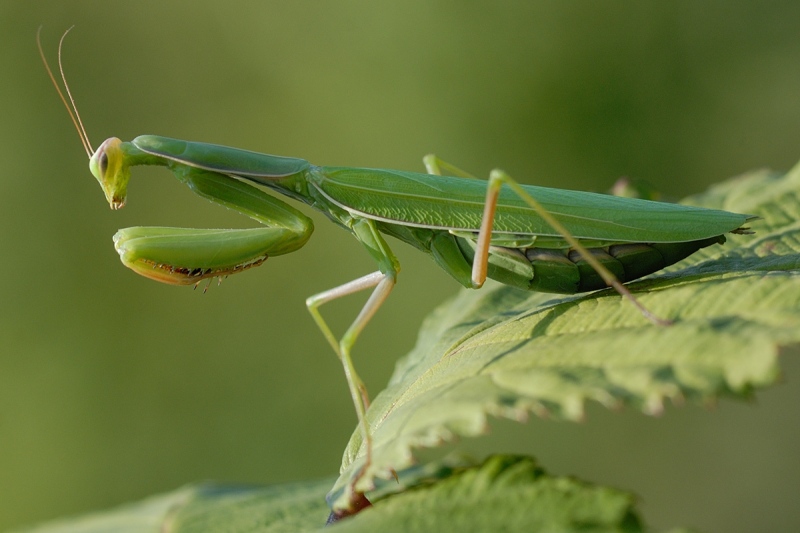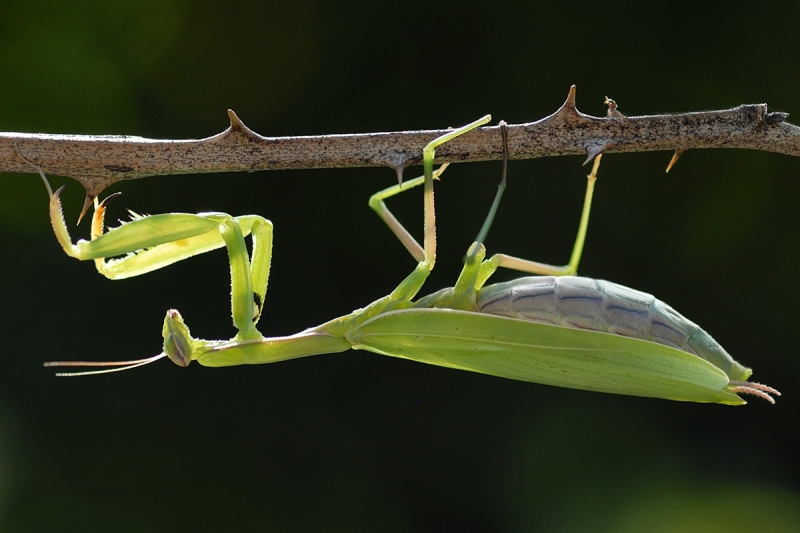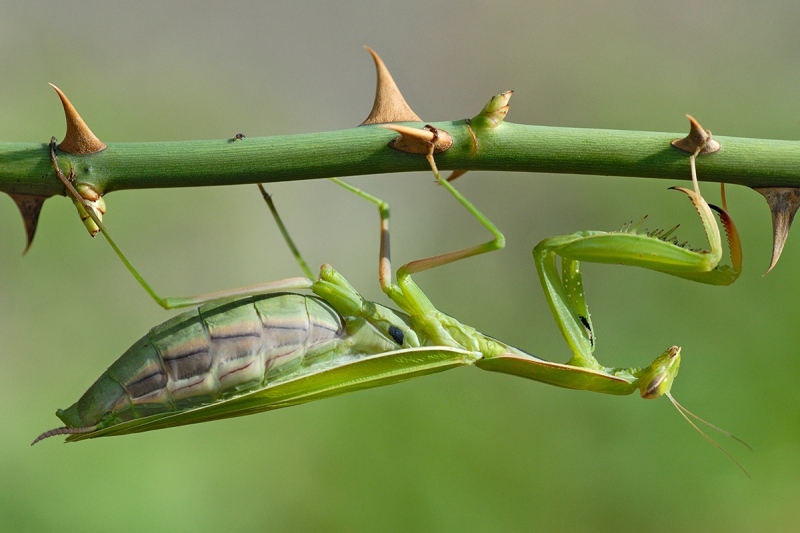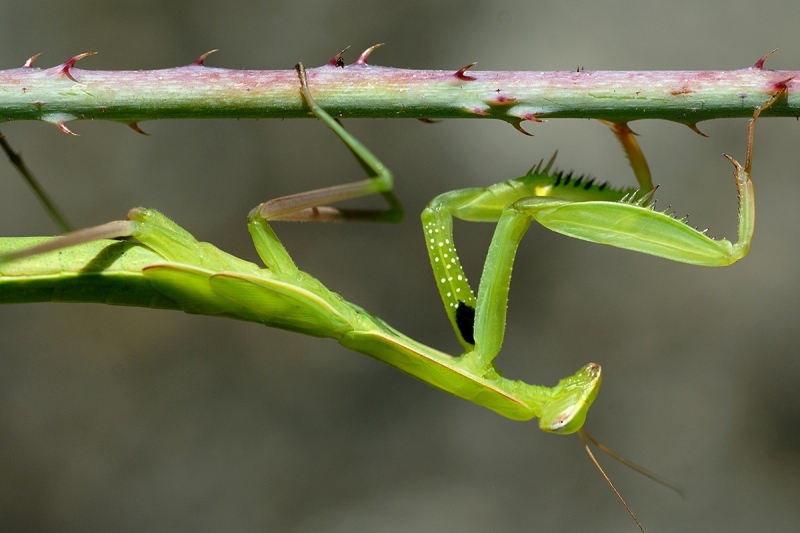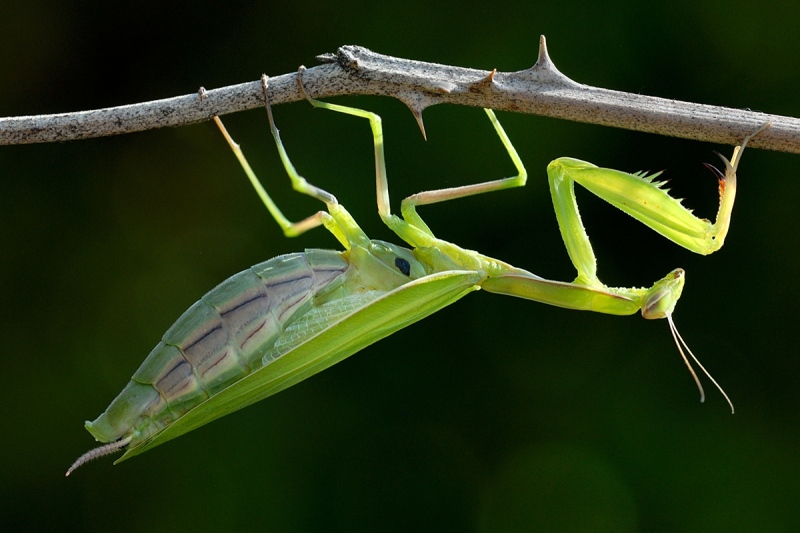Mantis religiosa, also called praying mantis or European mantis, is the only mantid that can be found in Central Europe. There it is commonly seen in late summer and fall. The fascinating insect gets its name because it has very long front legs that it holds in a position that reminds people of praying. The European mantis has an elongated body, long, slender limbs, two pairs of long legs used for walking or running, and two pairs of wings. The insect’s forelegs are adapted for capturing prey. They are modified with sharp spikes that prevent prey from escaping. The mantis’s head is triangular with beak-like mouthparts. The head on a long neck is highly mobile and can be turned 180 degrees to scan its surroundings with two large compound eyes and three simple eyes located between them. The coloration of the European mantis is highly variable. The species may be green, brown, yellow or even black in color. The female European mantis is larger than the male, reaching a maximum length of around 9 cm. Due to their large size, females lose the ability to fly early in their lives. Males are able to fly even as adults.
The European mantis is an ambush hunter: it sits very still, blending in with its surroundings and waiting patiently for an unwary insect to come near. Then it quickly snatches its unsuspecting victim. However, this species can also run quickly to attack. The diet of the praying mantis includes all sorts of soft-bodied insects and spiders.
